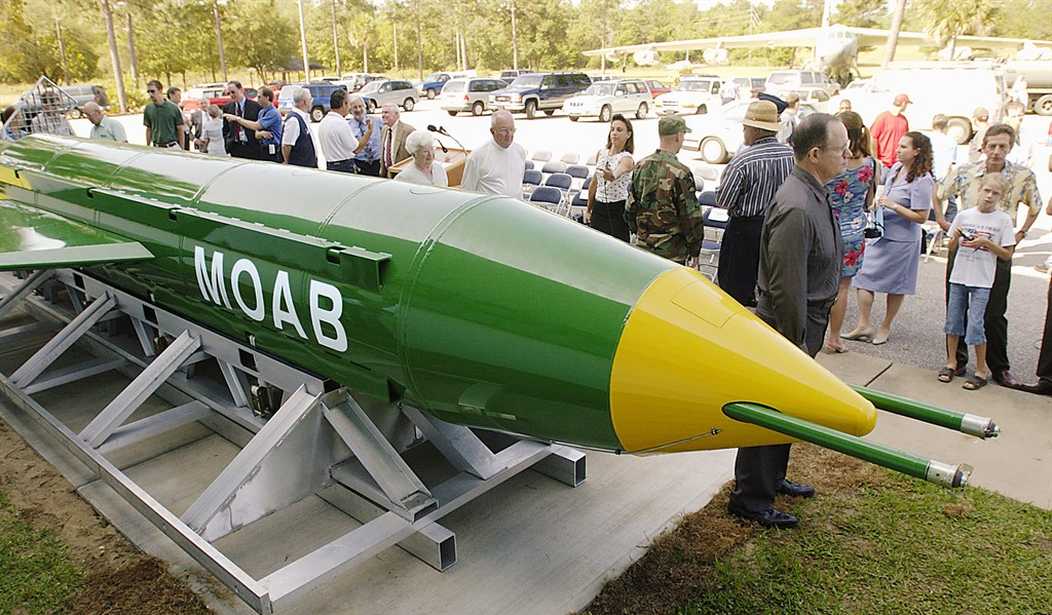The first deployment of the most powerful conventional bomb has succeeded in its mission, according to both US and Afghan sources, without any civilian casualties. The post-attack bomb damage assessment tallies up 36 ISIS-K casualties in Nangarhar and the destruction of caves and tunnels used for transit and subterfuge by the terrorist group, an offshoot of the so-called Islamic State in Syria. Given the novel use of the MOAB, the news could hardly have been better for the US:
U.S. forces dropped the largest non-nuclear bomb ever used in a strike against ISIS in eastern Afghanistan on Thursday, according to Pentagon officials, reportedly killing 36 militants.
The U.S. dropped a GBU-43 bomb, nicknamed the “mother of all bombs,” on ISIS fighters and tunnels and caves used by the terror group in the country’s Nangarhar province, officials said. It was dropped from an aircraft.
Afghanistan’s defense ministry said the attack left 36 ISIS fighters dead.
However, the use of the weapon has angered many in Afghanistan, including the former president who had at one time allied with the US:
Former President Hamid Karzai condemned the strike, saying it “is not the war on terror but inhuman, and (the) most brutal misuse of our country as (a) testing ground for new and dangeorus weapons. It is upon us,Afghans, to stop the USA.”
Karzi said, “I vehemently and in strongest words condemn the dropping of the latest weapon.”
Since news of the strike broke, most social media users in Afghanistan criticized both the Afghan government and U.S. One user called it “our generation’s “Hiroshima,” adding, “I’m still in shock.”
This generation might want to study the actual Hiroshima before making ridiculous comparisons such as that. While it’s true that initial bomb-damage assessments tend to be overly rosy, any such comparison to the August 1945 attack is simply ludicrous. Hiroshima’s blast killed 20,000 Japanese soldiers and as many as 126,000 civilians, and the attack was by a nuclear weapon dropped on a highly populated area. The BDA released by the US and Afghanistan would have to multiply by 555 times just on the combatants alone to qualify.
Karzai’s complaint might be taken a little more seriously, however, both on its merits and from his status within Afghanistan. The use of the MOAB after more than 15 years of war will definitely look like an escalation from the US, even if it consists of nothing more than the use of similar conventional explosives in a bigger delivery package. That seems to be the message that the Trump administration wanted to send, however, with the MOAB — that the US will no longer refrain from using every conventional weapon in its arsenal, and that the days of proportional responses are over. The military has grown frustrated with the lack of progress both militarily and politically in Afghanistan and want a game-changer of some sort that will force an end to the conflict, preferably on our terms. Business as usual is over, appears to be the message from the White House, and not just in this theater.
Besides, Karzai may not like it, but he may not represent an Afghan consensus:
Hakim Khan, 50, a resident of Achin district where the attack took place, welcomed the attack on ISIS, saying, “I want 100 times more bombings on this group.”
The Pentagon has released video of the bomb strike:








Join the conversation as a VIP Member